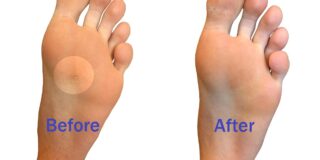
District Podiatry, PLLC
1647 Benning Road, NE
Suite #301
Washington, DC 20002

More Podiatry Foot Care Articles
Plantar Warts and Treating Them In-Office With Hydrozid®

Plantar warts, medically known as verruca plantaris, are a common dermatological issue that affects the weight-bearing areas of the foot. These warts are caused by the human papillomavirus (HPV) and are often seen in children and teenagers. Although they are generally harmless, many individuals seek treatment due to discomfort or the desire to prevent further spreading.
About Hydrozid
One modern solution for treating plantar warts is Hydrozid. This innovative cryosurgery device combines traditional cryotherapy techniques with advanced aerosol technology, delivering instant, safe, and effective treatment for various skin lesions, including plantar warts.
Developed by a reputable family-owned pharmaceutical and medical device company in Denmark, Hydrozid has been successfully used in Europe since 2013. It employs a patented delivery system with a consistent, controlled spray head, containing the safe gas norflurane (R134a), known for its use in asthma inhalers.
When applied to the skin surface, Hydrozid generates extremely low temperatures between -58°F and -65.2°F. This cold environment forms intra- and extracellular ice crystals, effectively removing the top layer of skin without harming healthy tissue. The procedure relies on repeated freeze-thaw cycles, making it brief, efficient, and patient-friendly.
Plantar Wart Treatment
With Hydrozid
Hydrozid is applied to the wart from a distance of 2-3 centimeters. To protect surrounding healthy tissue, especially for minor lesions like a single plantar wart, the application template included with the Hydrozid canister is recommended. Gently squeeze the trigger to ensure a light, constant stream. As ice crystals form, the treated area will turn white. Allow it to thaw for the recommended time and repeat the freeze-thaw cycle if necessary.
Treatment Duration
The duration of treatment varies depending on factors such as lesion location, thickness, appearance, skin type, age, and individual considerations. While general guidelines suggest an approximate total freeze time of 24 to 36 seconds, with freeze-thaw cycles lasting 4×6 to 6×6 seconds, it’s essential to assess each case individually.
Treatment Results
The use of Hydrozid for plantar wart treatment has shown promising results. Patients experience minimal discomfort during the procedure, and the efficacy of the device ensures effective wart removal without causing damage to surrounding healthy tissue.
Plantar Warts (Verruca Plantaris) After Treatment With Hydrozid
After successful treatment with Hydrozid, patients can expect significant improvement in the appearance of plantar warts. The targeted approach of cryotherapy ensures minimal scarring and allows for a swift return to normal daily activities.
Hydrozid offers an innovative and patient-friendly approach to treating plantar warts. With its proven safety and efficacy, it provides a promising solution for those seeking relief from these common foot warts. Always consult with a healthcare provider to determine the best treatment plan for your specific case.

















